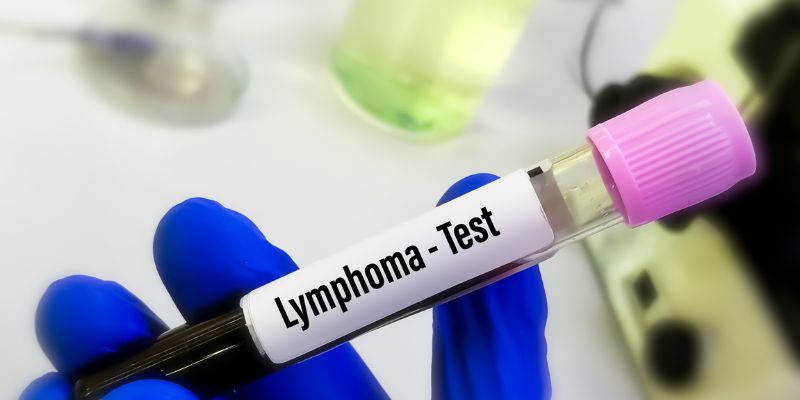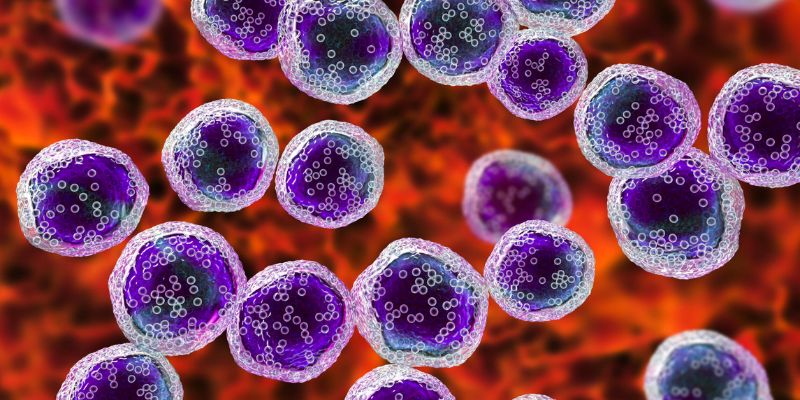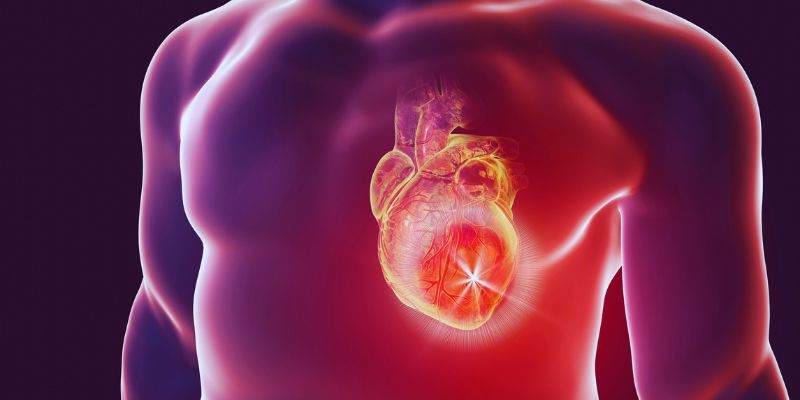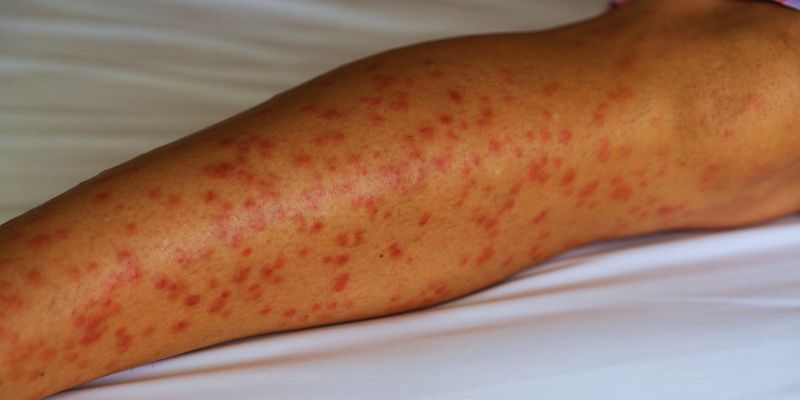Lymphoma: Spotting the Early Signs and Understanding Treatment Options
Lymphoma is a type of cancer that starts in the lymphatic system, an important component of the immune system. Early lymphoma discovery can have a big impact on outcomes since faster diagnosis and more successful treatment choices follow from early detection.
Among the symptoms suggesting this disorder are swollen lymph nodes, ongoing tiredness, inexplicable weight loss, and night sweats. Since therapies for various forms of lymphoma, including Hodgkin's Lymphoma and non-Hodgkin's lymphoma, vary depending on the kind and stage of the disease, it is imperative to learn to identify these indicators. Understanding early symptoms and available Lymphoma treatment choices helps patients and families make wise decisions and find greater help in negotiating their path.

What is Lymphoma?
Lymphoma is a kind of cancer developing in the lymphatic system, an important part of the body's immune system. This system comprises lymph nodes, spleen, and lymphatic tubes serving to prevent infection. Usually creating tumors in lymph nodes and other areas of the body, lymphocytes, a kind of white blood cell, begin multiplying improperly in Lymphoma. Two main types are Hodgkin's and non-Hodgkin's lymphoma. Each has different traits and symptoms; particular cell markers usually find Hodgkin's lymphoma.
Non-Hodgkin's lymphoma affects people differently and occasionally progresses at varying rates in several forms. One prevalent subtype, Follicular Lymphoma, is a slow-growing non-Hodgkin's disease whose mild symptoms make early diagnosis challenging. Early identification of lymphoma and knowledge of various forms can help to ensure a correct diagnosis and enable patients to get the correct treatment, therefore enhancing their prognosis.
Common Early Signs of Lymphoma
Although lymphoma symptoms vary, usually, they begin with obvious physical changes in the body. Some typical early symptoms include:
- Swollen Lymph Nodes: Frequent signs include enlarged lymph nodes, particularly in the neck, armpits, or groin. Usually painless, these swellings may also feel rubbery or solid.
- Fatigue and Weakness: Unusual tiredness, even without physical activity, is common in lymphoma. It can greatly change daily life.
- Unexplained Weight Loss: Rapid weight loss unrelated to diet or activity could point to lymphoma. This weight loss is often sudden and noticeable, occurring even without changes in appetite or lifestyle.
- Night Sweats and Fevers: Nighttime or repeated fevers, as well as heavy sweating, indicate the body's reaction to malignancy.
- Persistent Cough or Chest Pain: If lymphoma affects the chest region, breathing problems or regular coughing could follow. Some patients may also experience chest tightness or discomfort, especially during physical activity or deep breaths.
- Itching and Skin Rashes: Some lymphomas can cause skin problems, including red spots or itching. This itching may be persistent and unexplained, often occurring without a visible rash or irritation.
Understanding Hodgkin's Lymphoma Treatments
Doctors assess the stage and extent of Hodgkin's Lymphoma to decide the best course of action. Usually starting with chemotherapy, which targets and kills cancer cells all across the body, Hodgkin's lymphoma treatment is often included in early-stage instances; radiation treatment is targeted in particular locations to boost therapeutic efficacy. Usually advised for stage 2 Hodgkin's Lymphoma is a mix of radiation and chemotherapy to stop the spread.
Immunotherapy helps the immune system more successfully identify cancer cells that have emerged as a potential solution in recent years and destroy them. Every patient responds differently to treatment; some find fewer side effects than others. Examining all available treatment choices and talking about them with medical professionals is absolutely vital since knowledge of the possible advantages and results guides patients in making decisions. Patients have better odds of effectively treating the illness and enhancing their quality of life with several therapies at hand.

Non Hodgkin's Lymphoma Treatments
The kind, stage, and disease spread to determine the treatment for non Hodgkin's lymphoma. Often, slow-growing follicular Lymphoma treatment calls for doctors to use a tactic known as "watchful waiting initially." Under this strategy, the illness is monitored without urgent therapy until symptoms aggravate. Usually starting with targeted medicines, treatment starts as the cancer advances or symptoms get more noticeable. Often paired with monoclonal antibodies, which are meant to bind to cancer cells and assist the immune system to eliminate them, is chemotherapy.
For patients with more advanced degrees of non-Hodgkin's lymphoma, managing symptoms and improving quality of life take the front stage. Under these circumstances, medications seek to regulate the illness rather than cure it. Doctors might also suggest clinical studies looking at fresh, creative ideas. Patients with non-Hodgkin's lymphoma now have more hope than ever, thanks to continuous developments in treatment choices, better outcomes, and more individualized care plans.
What's the Treatment for Lymphoma in Stage 2?
Usually, stage 2 Lymphoma treatment calls for a mix of aggressive treatments to stop the disease from spreading elsewhere. Working together to target and manage cancer cells this frequently combines both radiation treatment and chemotherapy. Sometimes, especially in circumstances when conventional treatments show limited success, tailored therapy may be introduced. Targeted treatments are meant to attack cancer cells especially, therefore sparing damage to healthy cells and, hence, fewer side effects.
Doctors may advise some patients following the first treatment, a stem cell transplant. This operation replaces damaged cells with healthy stem cells, therefore encouraging faster regeneration and return of healthy tissue. For patients with stage 2 lymphoma, maintaining good knowledge about the several treatment choices and talking about probable results with medical professionals is absolutely vital. Knowing the choices helps patients to decide which best fits their situation and increases their chances of effective treatment and recovery.
Conclusion:
Early lymphoma diagnosis and knowledge of the disease will greatly affect patient outcomes and therapy success. Timeliness of diagnosis depends on the recognition of symptoms, including swollen lymph nodes, ongoing tiredness, and night sweats. Thanks to developments in Hodgkin's Lymphoma and non-Hodgkin's Lymphoma treatments, patients today have a variety of choices ranging from chemotherapy and radiation to targeted treatments and immunotherapy. For advanced-stage patients, clinical trials and symptom control also offer hope and enhance quality of life. Keeping current with treatment choices and speaking with medical professionals helps people to make decisions best for their health and recovery.












